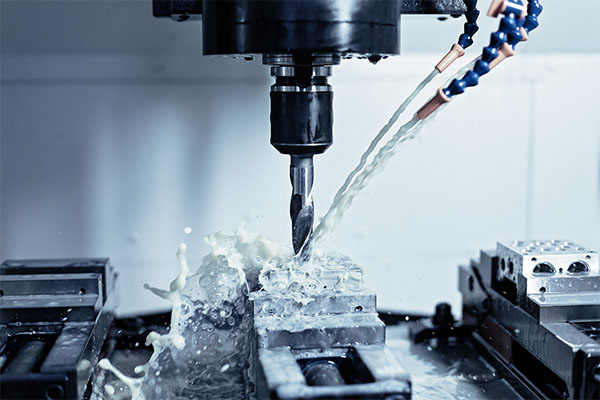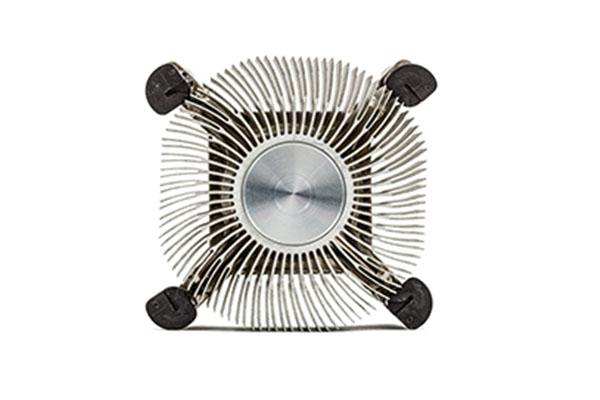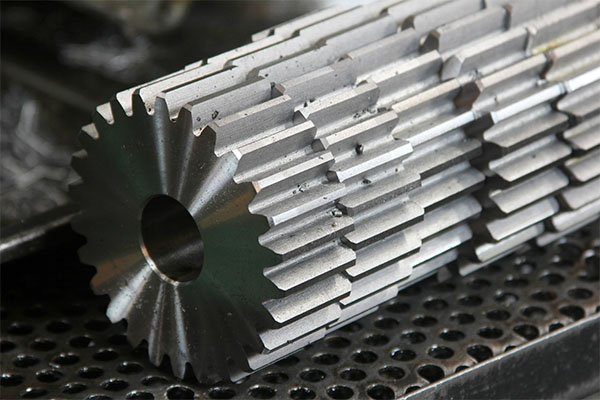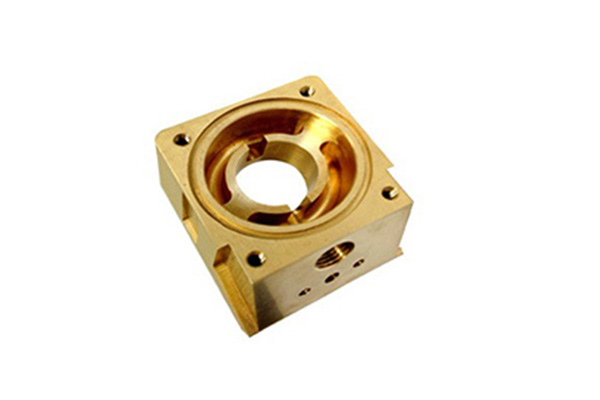Introduction
Achieving high precision CNC machining for aluminum parts is crucial for industries that rely on intricate and high-performance components. CNC (Computer Numerical Control) machining has revolutionized the way parts are produced, enabling manufacturers to create complex aluminum components with extreme accuracy. In this article, we’ll explore the essential factors that contribute to high precision machining, the best practices for achieving it, and how you can ensure your aluminum parts meet the highest standards of quality. Whether you’re a seasoned professional or just beginning to explore CNC machining, this guide will provide valuable insights into the process.

1. What Is High Precision CNC Machining?
High precision CNC machining refers to the use of computer-controlled machines to produce components with extremely tight tolerances and excellent surface finishes. This method is vital for manufacturing parts that must fit together perfectly and perform optimally in a variety of applications. CNC machines use a pre-programmed sequence of commands to control the movement of tools, ensuring precise cuts and shaping of the material. What’s the real story here? The key to high precision lies in the machine’s ability to follow instructions with minimal deviation, reducing errors and improving part quality.
In the context of aluminum machining, precision is even more important due to the material’s relatively soft nature compared to harder metals. Aluminum can easily be deformed during machining if the process is not carefully controlled, leading to dimensional inaccuracies. High precision CNC machining ensures that parts maintain their exact specifications even after multiple stages of cutting, milling, or drilling.
But here’s the kicker: the precision of your CNC machining process directly impacts the performance, durability, and functionality of your aluminum parts, making it a cornerstone for industries like aerospace, automotive, and electronics.
2. Why Is Precision Crucial in CNC Machining for Aluminum Parts?
Precision in CNC machining is particularly crucial when working with aluminum parts because of the material’s unique characteristics. Aluminum is widely used for its light weight, corrosion resistance, and ease of machining, but achieving the required precision can be challenging. When tolerances are not met, it can result in components that do not fit correctly or fail to perform as expected. This could lead to increased costs, downtime, or even safety risks in critical applications.
For instance, in aerospace manufacturing, an aluminum part that is even slightly out of tolerance can affect the performance and safety of an aircraft. Similarly, in the automotive industry, high precision is required to ensure that aluminum parts fit seamlessly within complex assemblies. What’s the real story? Failure to maintain precision during machining can compromise not only the part’s performance but also the entire system it is part of.
To understand the importance of precision, let’s consider a case study. A leading automotive manufacturer once faced costly delays when a batch of aluminum engine parts did not meet the required specifications, causing them to fail in testing. The issue was traced back to inaccuracies during the CNC machining process. With better precision control, the issue could have been avoided, saving both time and resources.
3. What Are the Key Factors Affecting CNC Machining Precision?
Achieving high precision in CNC machining is influenced by several critical factors, each playing a role in the final outcome. Understanding these factors is essential for producing high-quality aluminum parts. Ready for the good part? The top factors affecting CNC machining precision are machine capabilities, tooling, material properties, and environmental conditions.
- Machine Tool Capabilities: The performance of the CNC machine itself is fundamental to achieving high precision. Machines that are well-maintained, calibrated regularly, and designed for precision tasks tend to deliver the best results. For example, high-end CNC machines with advanced controls and high-speed motors can achieve greater accuracy than older, outdated models.
- Cutting Tools: The type and condition of cutting tools used in CNC machining are crucial. Dull or worn-out tools can cause dimensional inaccuracies and poor surface finishes. High-quality cutting tools, such as carbide inserts, are often used for aluminum parts to maintain sharpness and precision during extended machining runs.
- Material Properties: Aluminum is a soft metal compared to materials like steel, which means it can be more easily deformed during machining. Its properties, such as hardness, thermal conductivity, and grain structure, can affect the precision of cuts. It’s essential to understand how these factors interact with machining conditions.
- Environmental Factors: Environmental conditions, such as temperature and humidity, can affect the machining process. Changes in temperature can cause slight expansion or contraction of the material, leading to dimensional inaccuracies. By maintaining a controlled environment, you can minimize the impact of these factors on precision.
4. How Do You Select the Right CNC Machine for High Precision Machining?
Choosing the right CNC machine is pivotal in ensuring high precision when machining aluminum parts. Not all CNC machines are created equal, and selecting the wrong one can lead to poor results. So, what should you look for in a machine? Here’s a breakdown of key features that ensure precision:
- Precision and Accuracy: The machine should have high-precision components such as linear guides, ball screws, and feedback systems to ensure that it can maintain tight tolerances. Machines with a high-resolution encoder system can significantly improve accuracy.
- Stability and Rigidity: A stable and rigid machine reduces vibrations during cutting, which can affect the quality of the part. CNC machines made from cast iron or other materials with high vibration-damping properties are preferred for high-precision applications.
- Software Integration: Advanced CNC machines come with sophisticated software that can program and simulate machining operations with great detail. This helps identify potential errors or issues before the actual machining begins.
- Spindle Speed and Power: The spindle speed and power are critical factors in CNC machining, especially for materials like aluminum. A machine with a high-speed spindle can cut aluminum faster and with more precision, reducing heat buildup and material deformation.
5. What Are the Best Practices for Achieving High Precision in CNC Machining?
Achieving high precision requires more than just selecting the right CNC machine. It’s about consistently applying best practices throughout the machining process. Here are some key best practices that ensure precision:
- Proper Machine Calibration: Regular calibration of your CNC machine is essential to maintain accuracy over time. It ensures that the machine is properly aligned and that all movements are precise.
- Optimized Cutting Parameters: The right combination of speed, feed rate, and depth of cut can make a significant difference in machining precision. Adjusting these parameters for the material being machined can help achieve better results.
- Tool Selection and Maintenance: Always choose the right tool for the job and replace or sharpen tools that have become worn. A high-quality, sharp tool will create cleaner cuts and reduce the chances of part deformation.
- Minimize Thermal Effects: Aluminum can heat up quickly during machining, which can cause dimensional changes. Using coolant and controlling the cutting environment’s temperature can help minimize thermal expansion.

6. How Does CNC Programming Affect Machining Precision?
CNC programming plays a vital role in achieving high precision. The accuracy of the part depends on how well the program guides the CNC machine’s movements. But here’s the kicker: even small errors in the program can lead to significant deviations in the finished part.
- Program Optimization: Ensuring that the program is optimized for the machining operation helps reduce errors. This includes setting the correct tool paths, feed rates, and cutting parameters.
- Simulation and Verification: Before running the program on the CNC machine, simulating the machining process can help identify potential errors. Verifying the program ensures that all movements are within tolerance limits.
- Error Handling: Properly handling errors in CNC programming is crucial. Using error-correcting software and adjusting the program based on feedback from the machine can help maintain precision.
7. How Does Tool Wear Impact CNC Machining Precision?
Tool wear is inevitable in CNC machining, especially during high-volume operations. Over time, the cutting edge of the tool becomes dull, affecting the quality of the cut and the precision of the final part. The solution? Regularly monitoring and replacing worn-out tools.
- Signs of Tool Wear: Some common signs of tool wear include increased cutting forces, poor surface finishes, and dimensional inaccuracies. Paying attention to these signs can help prevent parts from being machined incorrectly.
- Tool Maintenance: Proper tool maintenance, such as cleaning and inspecting tools regularly, can extend their lifespan and help maintain precision.
- Tool Coatings: Using tools with advanced coatings, such as TiN (Titanium Nitride), can reduce wear and tear, allowing for more precise machining over longer periods.
8. What Role Does Coolant Play in High Precision CNC Machining?
Coolant plays a crucial role in CNC machining, especially when working with materials like aluminum that generate significant heat during machining. The right coolant can improve precision by preventing tool wear and reducing heat buildup.
- Cooling Efficiency: Coolants are used to dissipate heat and reduce the risk of thermal expansion during machining. This is especially important when machining high-precision aluminum parts.
- Lubrication: Coolants also provide lubrication, reducing friction between the tool and the workpiece. This helps improve surface finishes and extends tool life.
- Types of Coolants: Different coolants are used based on the type of machining operation. For aluminum parts, water-based coolants are commonly used for their effectiveness in heat dissipation and lubrication.
9. How Can You Improve Surface Finish in CNC Machining of Aluminum Parts?
Surface finish is one of the most critical aspects of CNC machining, especially when producing parts that require a smooth, polished appearance. Here are a few techniques for improving surface finish:
- Tool Selection: Choosing the right cutting tool for the desired surface finish can make a significant difference. Tools designed for fine finishing can create smoother surfaces.
- Cutting Parameters: Fine-tuning the cutting parameters, such as feed rate and depth of cut, can help achieve better surface finishes. Slower feed rates and shallower cuts often produce smoother surfaces.
- Post-Processing: After machining, processes like polishing or anodizing can further enhance the surface finish of aluminum parts.
10. What Are the Challenges of CNC Machining for Aluminum Parts?
CNC machining for aluminum presents several challenges, but these can be mitigated with the right approach. One of the biggest challenges is the material’s softness, which can lead to tool wear and deformation if not managed properly.
- Tool Wear: Aluminum’s soft nature causes tools to wear faster than when machining harder materials. Regular tool changes and maintenance are necessary to maintain precision.
- Material Deformation: Aluminum parts can deform under heat or excessive force. Using proper machining parameters, such as lower feed rates and optimized cutting paths, can help prevent this.
- Chip Removal: Aluminum produces long, stringy chips during machining, which can clog the machine and reduce precision. Proper chip removal strategies are essential.

11. How Does Tolerance Affect the Quality of CNC Machined Aluminum Parts?
Tolerance is critical in CNC machining, especially when working with aluminum parts that need to fit into complex assemblies. Tight tolerances ensure that parts fit together perfectly and function as intended. Poor tolerance can lead to mismatched parts, poor performance, and costly rework.
- Defining Tolerance: Tolerance refers to the allowable variation in the size or shape of a part. Tight tolerances ensure a higher level of precision and better part performance.
- Controlling Tolerance: Using high-quality machines and cutting tools, along with precise programming and regular quality checks, helps ensure that parts meet the required tolerance levels.
- Effects of Poor Tolerance: Parts that do not meet tight tolerance specifications may not fit properly in their final assembly, leading to malfunctions or the need for rework.
12. What Is the Role of Post-Processing in High Precision Machining?
Post-processing is often required to achieve the final quality and precision of CNC-machined aluminum parts. After the initial machining process, parts may require finishing processes such as polishing, coating, or deburring.
- Polishing: Polishing aluminum parts improves their surface finish, removing any rough spots left by the machining process.
- Coating: Anodizing and other coatings can enhance the appearance and durability of aluminum parts, as well as improve corrosion resistance.
- Deburring: Removing burrs from machined parts is essential for ensuring that they fit correctly and don’t cause any operational issues during assembly.
13. How Do Industry Standards Impact CNC Machining Precision?
Industry standards play a significant role in ensuring that CNC-machined aluminum parts meet the required specifications for performance, durability, and safety. Adhering to these standards helps manufacturers maintain consistency and reliability in their products.
- ISO and ASTM Standards: Many CNC machining operations follow international standards such as ISO (International Organization for Standardization) or ASTM (American Society for Testing and Materials) to ensure quality.
- Regulatory Compliance: For certain industries, such as aerospace and automotive, complying with specific regulations ensures that parts are safe and meet all necessary specifications.
- Quality Assurance: Adherence to industry standards guarantees that machined parts meet or exceed the required performance criteria, reducing the risk of defects or failures.
14. What Are the Costs Involved in High Precision CNC Machining for Aluminum Parts?
The costs of high precision CNC machining can vary depending on factors such as machine type, tool selection, and the complexity of the part. Understanding these costs helps manufacturers make informed decisions when budgeting for CNC projects.
- Machine and Tooling Costs: High-precision CNC machines and quality cutting tools come at a premium. However, investing in the right equipment ensures better precision and longer tool life.
- Material Costs: Aluminum is a relatively inexpensive material, but the cost of sourcing high-quality aluminum can vary depending on the supplier and the specific grade of material.
- Labor and Overheads: Skilled machinists are required to operate CNC machines, and labor costs can vary depending on location and expertise.
15. How Can You Ensure Quality Control in High Precision CNC Machining?
Quality control is a crucial step in ensuring that CNC-machined aluminum parts meet the required standards. This involves regular inspections, testing, and the use of advanced measurement technologies to verify part quality.
- Inspection Methods: Common methods include visual inspection, dimensional measurement, and surface finish testing.
- Advanced Technologies: 3D scanning and coordinate measuring machines (CMMs) can provide highly accurate measurements and help ensure that parts meet the specified tolerances.
- Continuous Monitoring: Implementing continuous quality monitoring systems during machining can help identify issues early and reduce the risk of defects.
FAQ Section
Q1: What is high precision CNC machining?
High precision CNC machining refers to the process of using computer-controlled machines to produce parts with tight tolerances and superior surface finishes. It is crucial for industries that require accuracy and functionality in their components.
Q2: How does CNC machining for aluminum parts differ from other materials?
Aluminum is softer than many other materials, making it more prone to deformation during machining. As a result, special care must be taken to maintain precision and avoid tool wear.
Q3: What are the best practices for achieving high precision when machining aluminum?
Regular machine calibration, optimizing cutting parameters, and using quality cutting tools are essential for achieving high precision in CNC machining of aluminum parts.
Q4: How do you reduce tool wear during CNC machining of aluminum parts?
Tool wear can be minimized by using high-quality cutting tools, regularly inspecting and replacing worn tools, and adjusting machining parameters to reduce heat buildup.
Q5: What are the benefits of post-processing in CNC machining for aluminum?
Post-processing techniques like polishing and coating can improve the surface finish, enhance the durability of parts, and ensure that they meet the required specifications for their final application.


